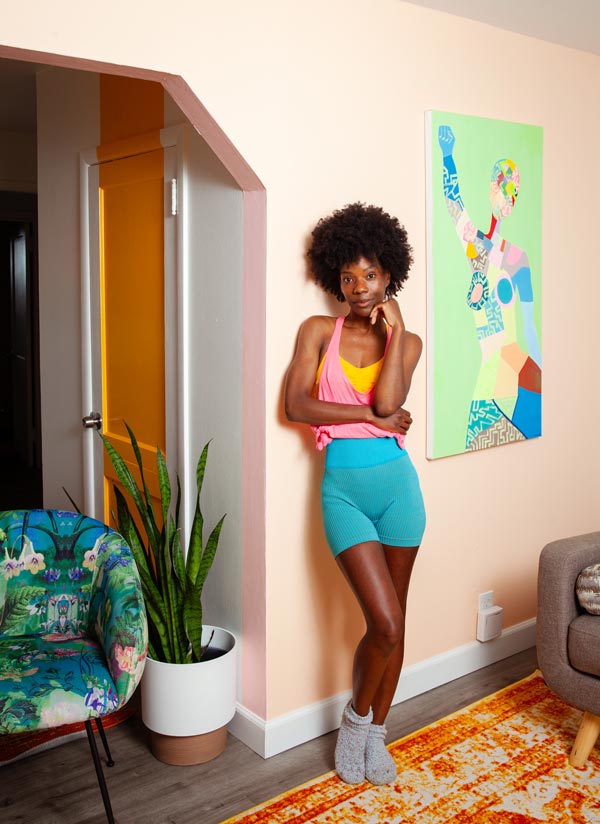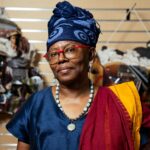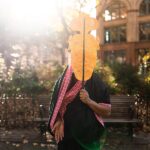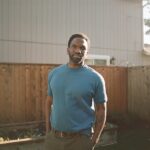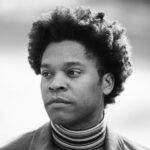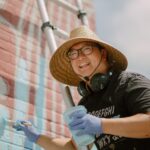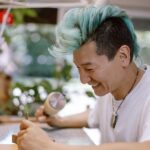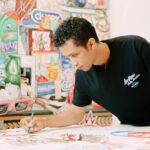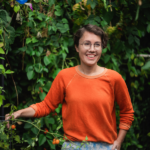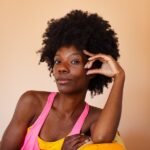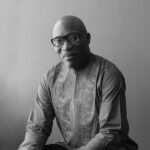Latoya Lovely’s Radiant Gaze
Written by Daniela Naomi Molnar; Photographed by So-Min Kang
If a name is an oracle, Latoya Lovely is fulfilling her destiny—which, Lovely knows, is not a passive act. One doesn’t sit back and allow destiny to occur. Lovely, whose surname comes from her paternal lineage and whose first name means “victorious,” has lived up to her name by actively making loveliness in many forms.
Guided by the sensitivity, trust, and grit that destiny demands, Lovely is a self-taught painter and muralist who learned her skills through diligently studying YouTube tutorials. “It’s like, how do you start walking?” she told me with a laugh when we spoke in her tidy, colorful home studio on a sunny day in June. “I was trying to learn how to blend [paint] and it’s like, I didn’t even know what [blending] was called. I had zero idea, but I knew that I really wanted it.”
Wanting was enough to activate her tenacious spirit, strong intuition, and polymath intelligence. Guided by an ethos of joyous creation and deep respect for her chosen mentors, including the muralist Alex Chiu and the artist and storyteller Intisar Abioto, Lovely made her path by walking it, surprised at each step. Surprise, for Lovely, is a close cousin of delight. She has dedicated her forty-one years to growing her sense of experimentation and play, never content to settle into predetermined roles.
This spirit of experimentation at first led Lovely to make “little, tiny art pieces.” In 2003, when she was in college, she started making tiny 3″ x 5″ paintings featuring flowing, faceless figures whose fluidity and grace reflected her many years as a professional modern dancer. She thought of them as greeting cards and would bring them to dance rehearsals to share with her company. The facelessness was a side effect, Lovely says, of her lack of trust in her own abilities as an artist at that time. She kept making and giving away these small paintings for years, building her skills and building community, but she felt that she hadn’t yet earned the title of “artist.”
It wasn’t until after the murder of George Floyd in 2020 that Lovely allowed herself to assume this identity; the event initiated profound concurrent shifts in her self-image, her artwork, and her understanding of racism in her own life and in our nation’s history and present. When Lovely moved to Portland at age eleven, her stepdad, who grew up in Salem, “gave us a quick talk…about what it is to be Black here in Oregon. He sat us down and was like, ‘It’s not like Florida, you know, you’re not gonna be surrounded by people who look like you….’ It was a big switch to be in a different culture.”
Lovely’s experiences of racism in childhood were understood only in adulthood, when she looked back with perspective on how institutionalized racism can manifest in microaggressions and other subtle, yet destructive, forms of bias. As a child, Lovely understood Portland’s weather as the most immediate threat to her wellbeing. Portland’s interminably wet, cold winters prompted “devastation.” “I was like, wait, so how long is it cold for? I just could not wrap my mind around it. I’ve been here a long time. I’ve gotten mostly used to it, but I always am surprised by how much my soul needed the sun when spring comes.”
The horror and outrage Lovely felt in response to Floyd’s murder catalyzed a defiant sort of springtime for her art and career. Her work grew to paintings of 3 x 5 feet rather than inches, and then “exploded” to immersive, billboard-size murals. “I can’t contain myself,” she told me with a smile. She began focusing on strong Black women, men, and children who not only have faces but direct, searing gazes that stare at the viewer unflinchingly.
Some of her subjects are historical or contemporary figures while others are archetypes of power and resilience from Lovely’s imagination. These dynamic figures are embraced by and sometimes enmeshed in mosaic-like worlds that coruscate with unexpected colors. Lovely uses acrylic paint and makes full use of that medium’s range of vibrant hues. Her use of color is sophisticated, wild, and wholly unique, creating a lively, living world from which vaunted figures beam.
The scope of a mural was, at first, a challenge for Lovely, who describes her first attempt at making a commissioned mural as “a lot of wasted paint.” A boutique hotel in Portland commissioned her to paint the inside of a suite. She was thrilled, and prepared by following her usual process of self-education through YouTube tutorials and conversations with mentors. But once she was actually alone in the room, she found the task more challenging than she had anticipated. She tried and failed, tried and failed. After many attempts, she still wasn’t done and the clock was ticking. The hotel had to begin work on the exterior of the building, so they sealed her in her room with thick plastic to protect her from fumes. That morning, isolated in the room and in herself, she crumpled into the hotel bed and cried. But then she got up, turned on Beyoncé—loud—and painted that mural. Lovely the Victorious learned that “we don’t know what we’re capable of until we do it.”



